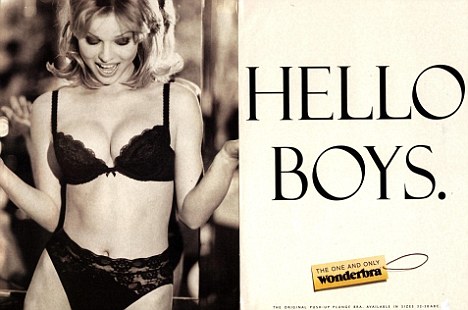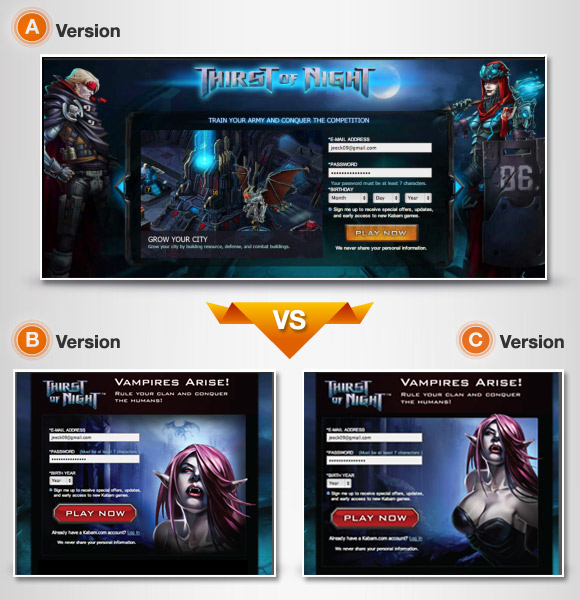Sex sells – everybody knows. Or does it?
Table of contents
A fifth of all ads use sex
According to the book Sex in Advertising: Perspectives on the Erotic Appeal around 20% of all ads use sex (a good collection here). Of course you already knew this.
Open any magazine and sexy ladies (and men) will sell you anything from shampoo to chainsaws. Some say that fitness marketing is almost soft porn these days. Most big companies have used sex to advertise. Even Apple – even though it doesn’t allow sexual apps on their appstore.
Why are there so many ads using sex? Is it cause it’s really boosting sales? Here’s the real explanation for this.
“If you look at most of the Fortune 500 companies, who are they run by? Men. So, you’re their advertising agency and you’re pitching these ideas to these men. Well, men have a very specific idea of what’s beautiful.”
– University of Florida advertising professor Robyn Goodman (source)
Perhaps sex doesn’t sell, after all
According to one study an overwhelming 61 percent of the respondents say that sexual imagery in a product’s ad makes them less likely to buy it. Interestingly, 53 percent of respondents surveyed said they are more likely to buy a product that is advertised using the imagery of love.
Another study made by AdWeek and Harris poll showed that more than half of Americans (56%) say they are bothered by sexual imagery in ads they are exposed to, a quarter are very bothered and the rest are somewhat bothered.
Of course, these surveys were asking people how they would behave. People rarely know.
Sex doesn’t sell movies
A study on sex in the movies – that examined more than 900 films released between 2001 and 2005 – concluded that nudity and explicit sex scenes don’t translate to success for major motion pictures.
Contrary to popular belief, sex and nudity failed to positively affect a film’s popularity among viewers or critics and did not guarantee big box office receipts. The top-grossing films in the study contained mostly minor to mild sex and/or nudity.
Women turned off by sexual ads?
There are these two studies which show that women are bored by ads using sex – even when they were made for and appeared in fashion magazines aimed specifically and uniquely at female consumers, including Vogue, Cosmopolitan and Allure.
The studies don’t reveal exactly what the women don’t like about these ads. When I shared the study about women disliking sexy ads in magazines with a lady friend, she suggested it might be because of envy. The goal of those ads in those magazines is not to make people relate to them, in fact the opposite is true. They’re aspirational.
Sex reduces brand recall
MediaAnalyzer Software & Research explored how men and women look at sexually themed ads and what effect that visual behavior might have on the ads’ effectiveness.
Long story short, men’s brand recall was worse for the sexual ads than for the nonsexual ones. An average of 19.8 percent recalled the correct brand/product for the nonsexual ads; for the sexual ads, 9.8 percent did. Strong, sexual visuals reduced the attention brand was getting by 50%.
Men liked the sexual ads, but couldn’t really remember what company was advertised. Women did not like the sexual ads, and interestingly their brand recall was more than 50% worse.
I think Reebok Easytone is a good example where sex is being sold way more than the product itself. The shoes are completely overshadowed by ass. In the end, you want sex, not the shoes.
And it’s not just about the brand recall, it’s about noticing the brand to begin with. A viewing observation study revealed that men hardly pay any attention to the ad copy or products on sexy ads.
So when does sex sell?
Sex has a proven track record. The Wonderbra ‘Hello Boys’ campaign is a great example. Its billboards stopped traffic and aroused the attentions of men, but it put women in the driving seat. Seven units were sold every second in its 1994 heyday – 1.6m in that year alone.
An interesting tidbit: 73% of sexual ads in magazines contain a sex-related brand benefit. Common themes follow the “Buy this, get this” formula. If you buy our product: (1) You’ll be more sexually attractive, (2) have more or better sex, or (3) just feel sexier for your own sake.
Axe and Old Spice body sprays make a lot of money, and they’re positioned as sexual-attractant enhancers. For over 30 years, sex in one form or another has been a mainstay in Calvin Klein ads. Their annual revenue in 2010 was $2.5 billion, up from $1 billion in 2005. Ads continue to be as edgy as ever.
Victoria’s Secret is all about sex. The company has grown from three boutiques in San Francisco to the most successful intimates brand in the world. So clearly, being all about sex can be good business.
This ad of theirs got around one million views in just one week:
So I’d suggest you use sex in your branding if your brand is about sex. It seems to work.
Sex makes us impulsive and focus on the short-term
Scientists claim they have discovered exactly why sex sells. Researchers found seeing an attractive man or woman in an advert excites the areas of the brain that make us buy on impulse, bypassing the sections which control rational thought.
“These results suggest that the lower levels of brain activity from ads employing NI (non-rational influence) images could lead to less behavioral inhibition, which could translate to less restraint when it comes to buying products depicted in the NI advertisements.”
– Dr. Ian Cook, a professor of psychiatry at the Semel Institute for Neuroscience and Human Behavior at UCLA
Basically this means that seducing consumers can be a more effective way to sell products than persuading consumers. Even better, combine both.
Similar findings were confirmed by other studies.
Belgian researchers conducted a series of tests on 358 young men, showing some of them sexual images or objects, and other half not. The sexy imagery did not work on all men all the time, but, as a group, men with sex on their brains were more impulsive and valued immediate gratification more than the controls.
“I observed in my studies that men are more likely to pick a smaller immediate reward over a larger later reward. Hence I do think that men might spend money on something they might otherwise not purchase. Men would become more impulsive in any domain after exposure to sexual cues.”
– Bram van den Bergh, the study’s lead author
Another study got similar results. They found that men who viewed photos of women judged to be attractive became more attracted by short-term rewards.
Add here the research by George Loewenstein of Carnegie Mellon University and Dan Ariely of MIT, who found that sexually aroused men would do all sorts of things they might not otherwise do.
When aroused, more men (compared to non-aroused) found women’s shoes sexy and wanted to take part of a threesome. Aroused men narrow their view of the world. When they’re thinking about sex, that’s all they think about and that leads to impulsive, irrational behavior.
So what does this all mean?
If you want your customers to think short-term and go for immediate satisfaction (impulse purchases), using sexual imagery is a good idea.
I would think a time-related scarcity would boost any sexy offer even more – taking advantage of their irrationality while they’re turned on.
Using sex to sell more online
Offline advertising is one thing (even though a racy ad can be a fantastic link building tool), what about using sex online – banners ads, landing pages, websites and so on? (I’m talking about non-adult industries).
There was a successful auction on eBay where a guitar was sold using sex. Unfortunately we won’t know what the result would have been without the sexy photo.
And Shoemoney conducted an experiment on Facebook and discovered that ads with boobs get the most clicks (and lower CPC thanks to higher CTR) and they even convert. This was his winning image:
Of course, you have to be careful when using such imagery – it will surely attract tons of clicks (=cost) that have no intention to buy your stuff.
Virtual cleavage works (for men)
How would you increase conversions when targeting hardcore social gamers, male, ages 18-40? With breasts, of course.
Ion Interactive was testing a landing page for a video game. Two variations of a female vampire image were be tested to determine whether a head shot or body shot is more effective at driving game sign ups.
Results: Version C kicked butt! For PPC traffic, landing page C resulted in a 95% increase in sign ups over landing page A and a 35% increase in sign ups over landing page B. For Affiliate Marketing traffic, landing page C resulted in a 39% increase in sign ups over landing page A and a 30% increase in sign ups over landing page B.
However, this doesn’t mean that sex sells more video games. In fact, less sex sells better. Some say it’s because there are more women playing video games than ever. Even Lara Croft has been reduced to more anatomically feasible proportions, her breasts and lips have shrunk in recent years. Newer versions of the game have sold better than the earlier ones.
Untapped potential
The truth is that there’s little data available on using sex to boost online conversions. It seems that it’s not a widely used approach. I would think that there’s some untapped potential here and some people will make good money using it.
Can sex work when selling to women?
Researchers followed up on earlier research that has demonstrated that women exhibit negative reactions to explicit sexual content in advertising.
Their hypothesis was that women’s attitudes toward sexually oriented advertising would improve if ads reflected devotion and commitment.
“Findings from our initial experiments were supportive of this hypothesis. Experiment one illustrated that commitment-related cues in the ad itself (for example, positioning the product as a gift to a woman from a man) boosted women’s attitudes.”
So if you want to appeal to women, show love and commitment instead of purely recreational sex.
Maybe you’re already selling sex, you just don’t know it
That smartphone in your pocket? That’s for sex. So is the car you drive and the clothes you wear. Everything you own is about sex and attracting more of it. This is what evolutionary psychologist Geoffrey Miller says in his book Spent.
Pretty much every purchase decision and acquisition of personal goods is motivated by the primal desire for procreation, pleasure or both – he claims.
If that’s true and you can figure out how your product or service can help buyers get more sex, maybe it is a good idea to test using sex in your ads and website. Just bear in mind that including sexuality in your advertising and/or web visuals will almost certainly alienate some of your audience (but that might be okay).
If you do test it, share the results!










Thanks for confirming my gut feeling. I think I’ll amp up my more provocative blog banners!
While I love sex as much as the next guy, I generally feel insulted by Facebook ads that think I’ll click simply because they have cleavage. Maybe cavemen fall for that, but it is a red flag to me that their product is probably cheap or garbage… But maybe that is the marketing degree shining through. Everyone hates feeling manipulated or tricked.
So in a nutshell: Sex sells, if you’re selling sex, otherwise it’s just attractive.